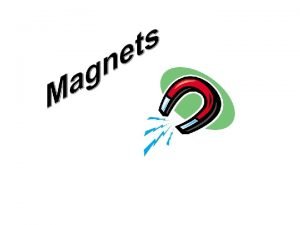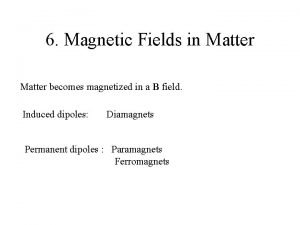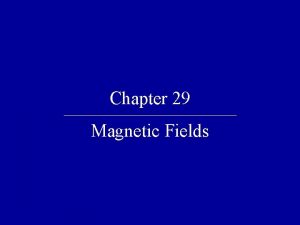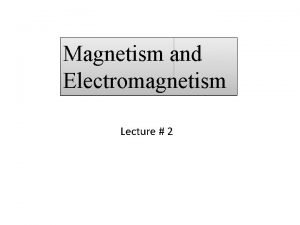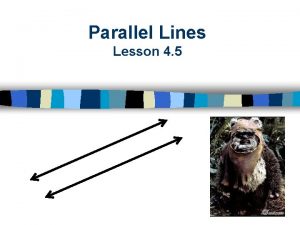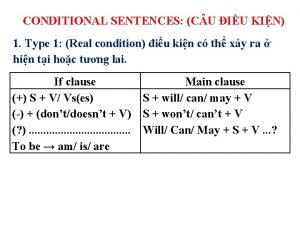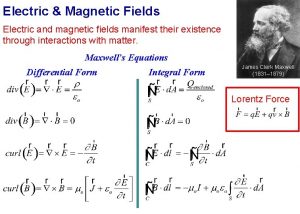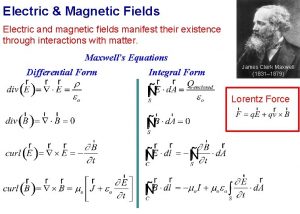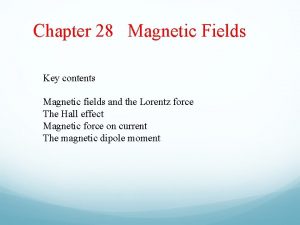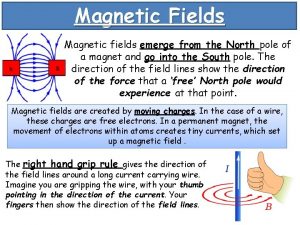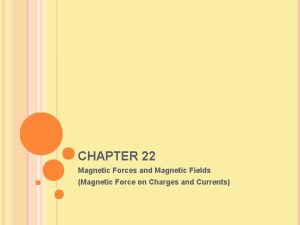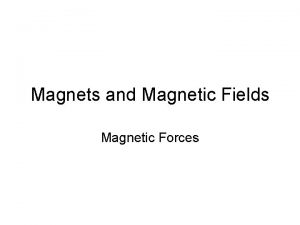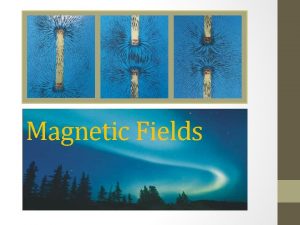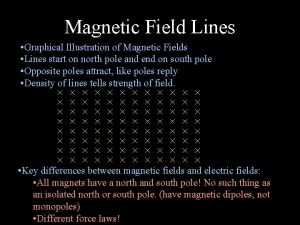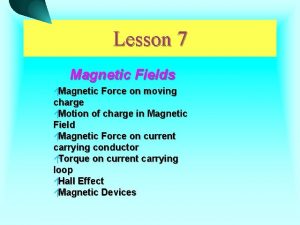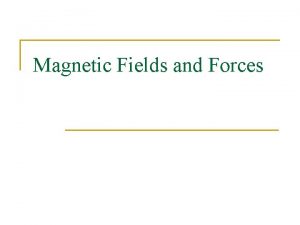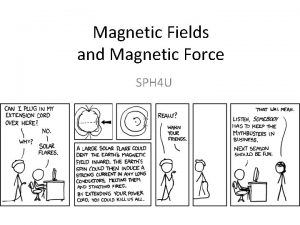Magnetic Fields Lines of Force Never cross Lines














- Slides: 14


Magnetic Fields • Lines of Force Never cross • Lines of force are continuous individual closed loops around the magnet

Magnetic Fields • Lines of force go from North to South • Closer lines = stronger the force • Farther apart the weaker the force

Magnetic Fields • A magnetic field consists of imaginary lines of flux moving around a magnet where the magnetic force is exerted • Magnetic field lines always form loops. The lines represent the invisible magnetic field surrounding a magnet

Some important facts emerge when plotting lines of force: • Lines of force NEVER cross. • Lines of force are CONTINUOUS. • Lines of force always form individual CLOSED LOOPS around the magnet. • Lines of force have a definite DIRECTION from North to South. • Lines of force that are close together indicate a STRONG magnetic field. • Lines of force that are farther apart indicate a WEAK magnetic field.

The Earth itself is a magnet, with a magnetic north pole and south pole. S N The origin of the Earth’s magnetic field is said to be a result of the electric currents produced by the rotation of the ironnickel core. The Earth’s magnetic field continually traps moving charged particles coming from the sun, called solar wind.

What is a Magnet? • A magnet is anything that attracts materials that has a magnetic field and will attract materials like iron, nickel and cobalt. • A material that has strong magnetic properties is called ferromagnetic (ferrum is a latin word for iron. )

Uses for Magnets • • • Holding things on your refrigerator! Credit cards Computers Electronics Compasses And many more!

Properties of Magnets • Magnets attract when the OPPOSITE POLES of two magnetic objects are close to each other. • Magnets also strongly attract ferromagnetic materials such as iron, nickel and cobalt.

• Magnets Repel when LIKE POLES are facing each other, the magnetic force pushes them apart • Part of a free swinging magnet always points in the direction of north (like in a compass!)

Magnetic Poles • We call the ends of magnets “poles” • ALL magnets have a north (N) pole and a south (S) pole. • Like poles repel • Opposite poles attract

Magnetic Poles

How it looks throughout the object

Electrons • Electrons are tiny negative particles that surround an atom and are what give magnets their magnetic properties • Spinning electrons produce a magnetic field • When many electrons are spinning in the same directions those individual magnetic fields combine to form a stronger magnet
 F=i(lxb)
F=i(lxb) Red fields
Red fields Magnetic field lines always cross.
Magnetic field lines always cross. Learning: module 26: magnetic forces and fields
Learning: module 26: magnetic forces and fields Lesson outline lesson 1 magnets and magnetic fields
Lesson outline lesson 1 magnets and magnetic fields Magnetic fields in matter
Magnetic fields in matter Magnetic force quiz
Magnetic force quiz Electric currents and magnetic fields
Electric currents and magnetic fields Electric currents and magnetic fields
Electric currents and magnetic fields A substance that attracts pieces iron
A substance that attracts pieces iron Parallel lines and planes
Parallel lines and planes His love never fails it never gives up
His love never fails it never gives up We are never never weary
We are never never weary He never polishes his shoes so he never looks smart
He never polishes his shoes so he never looks smart He never polishes his shoes so he never looks smart
He never polishes his shoes so he never looks smart


